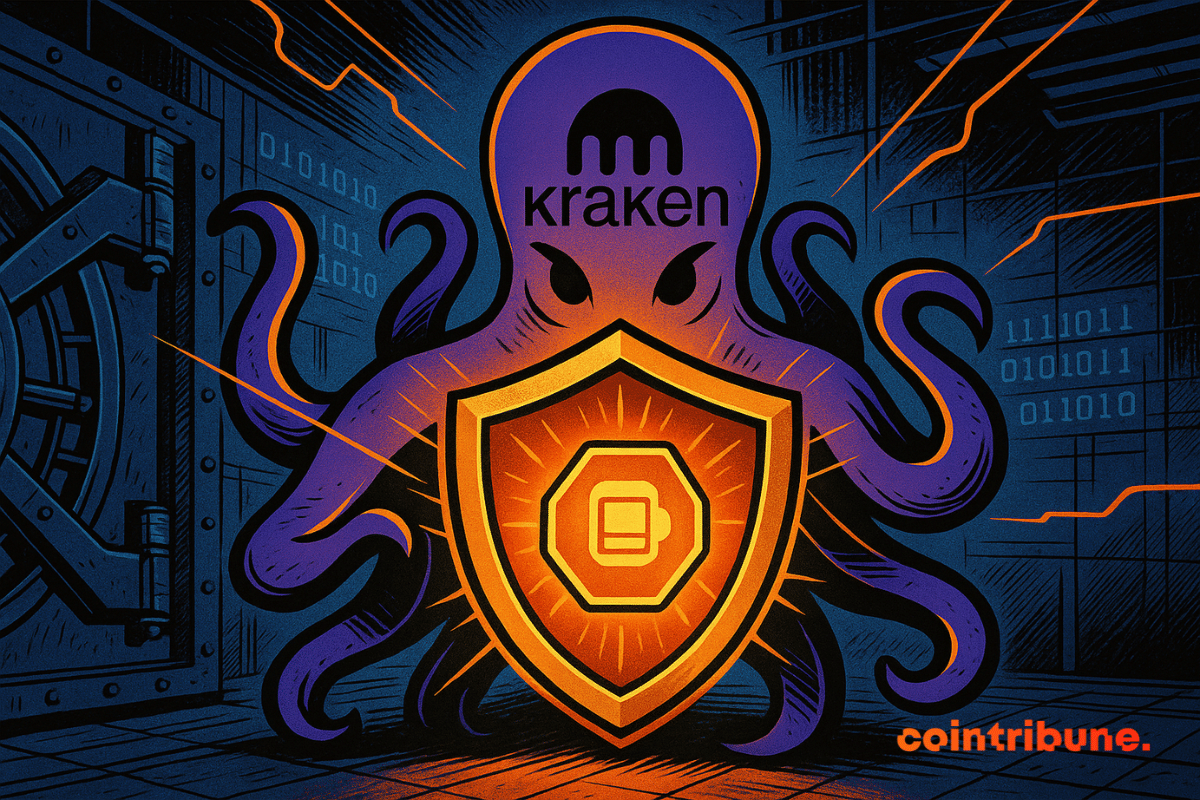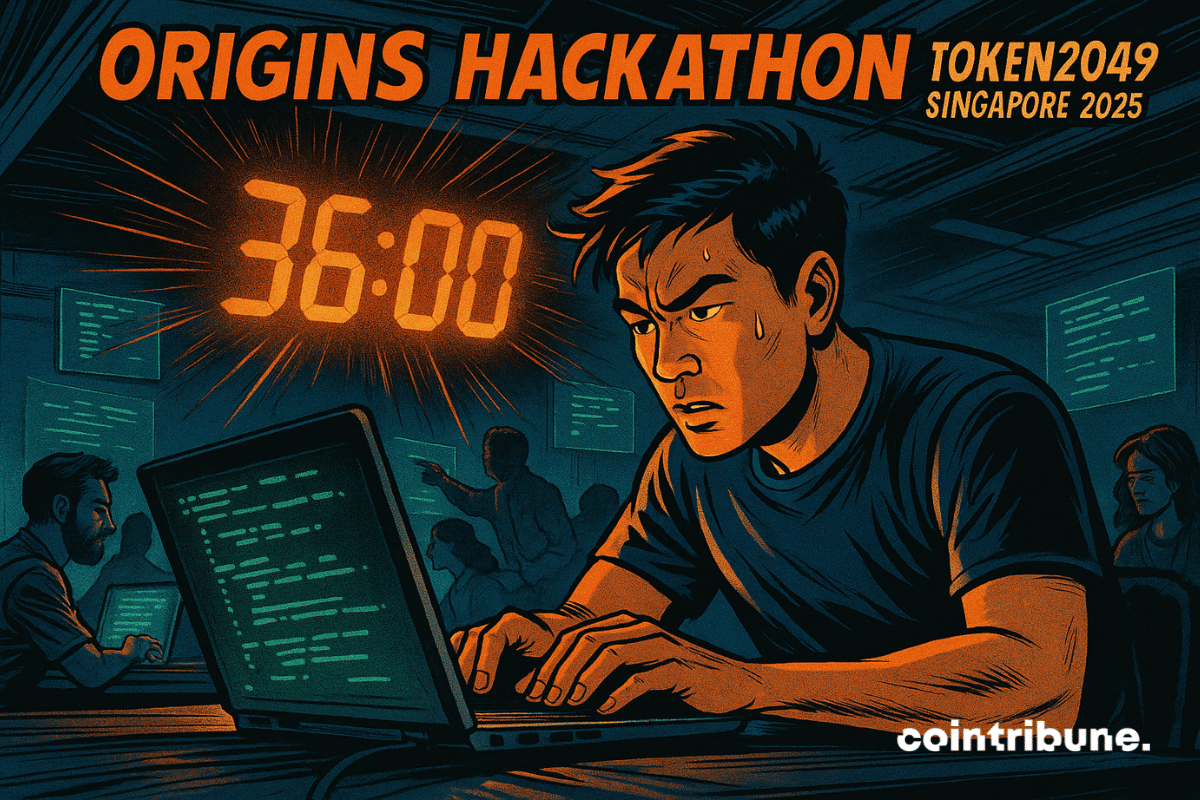The crypto market continues to grow, attracting an ever-increasing number of curious or eager users to invest. Yet, faced with the complexity of technologies like blockchain, access to clear and reliable information remains a real challenge. In this technical environment, Kraken establishes itself as a strategic partner for both individuals and businesses. The platform is not limited to buying or selling digital assets. It offers you a true educational accompaniment. Thanks to a rich and structured resource center, as well as a responsive and available customer support at all hours, Kraken places education and assistance at the heart of the user experience.
Learn
Investing in digital assets now appeals to a much broader audience than just tech enthusiasts. Even cautious investors are turning their attention to this emerging asset class, seen as a serious alternative in the face of growing instability in traditional financial markets. Cryptocurrencies bring a new form of diversification built on innovation, decentralization, and growth potential. In this fast-evolving environment, Kraken stands out as a reliable bridge between traditional finance and the crypto world. This article explores why Kraken is a relevant tool to diversify your portfolio within a secure, educational, and structured framework.
Security remains one of the main concerns for investors in the field of cryptocurrencies. Recent scandals, large-scale hacks, and losses due to poor management of private keys have increased mistrust towards certain platforms. In this context, transparency and the robustness of the infrastructure become decisive criteria. Kraken stands out as a reference in the protection of digital assets, thanks to a rigorous approach and proven security measures. This article highlights the concrete mechanisms put in place by Kraken to guarantee the security of funds, while providing users with tangible and verifiable proof.
The crypto market is no longer limited to speculative trading alone. A new approach is attracting investors: staking, which allows obtaining regular returns without giving up assets. This method appeals to both long-term holders and savers seeking additional income. Kraken offers a simple, accessible, and secure solution with rates reaching up to 17% APY depending on the selected asset. The platform combines performance, reliability, and transparency to provide a staking experience suited for all profiles. Let's explore together the advantages of this strategy and the guarantees offered by Kraken in its regulated environment.
Crypto trading at a professional level relies on execution speed, precision of tools, and rigorous risk management. Many active traders, tired of the limitations imposed by generalist platforms, choose Kraken Pro to enhance their efficiency. This solution is intended for those seeking competitive fees, margin access, derivatives products, and high-level technical infrastructure. Kraken Pro combines performance, security, and adaptability to meet the demands of experienced investors. In this article, we analyze in depth the strengths of this platform and the reasons that encourage traders to adopt it in the face of sometimes disappointing competition.
In the crypto world, trust is an essential pillar. As scandals multiply, more and more users turn to platforms capable of guaranteeing the security of their funds and the transparency of their operations. Kraken stands out as one of the industry's references, alongside Binance, Coinhouse, or Bitpanda, while focusing on a rigorous and sustainable approach. This guide highlights Kraken's main strengths: a solid regulatory framework, proven security, a wide range of services, and recognized performance. The goal is to help each user invest in crypto-assets with peace of mind.
The world of cryptos is generating increasing interest among the general public, driven by the evolution of bitcoin and digital assets. However, for a new investor, making a first purchase can cause hesitation and confusion. Kraken offers a clear alternative to this complexity. Thanks to a streamlined interface, a quick registration process, and purchase options accessible from 10 euros, the platform paves the way for a calm first experience. Security, education, and simplicity are at the heart of its approach. This article guides beginners step by step who wish to acquire their first cryptos without obstacles or unnecessary jargon.
After several weeks of waiting, Cointribune finally unveils the brand new version of its Read2Earn program: a redesigned, enhanced system entirely dedicated to rewarding your crypto curiosity. If you read Cointribune every day, this update will transform your experience: from now on, every article read has value, every step taken brings you closer to a reward, and every session becomes concrete progression in your Web3 adventure.
Read2Earn is based on a simple principle that turns each reading into a potential gain. The reader progresses through quests and earns points that unlock access to a wide selection of rewards. The Marketplace plays a central role in this ecosystem, as it gathers all the available goodies, digital Assets, and contests. Every point earned brings you closer to a real reward. This article explains how to unlock the Marketplace, how to use your points, and how to purchase the offered rewards. The goal is to provide a clear guide to fully benefit from the Read2Earn system offered by Cointribune.
The Read2Earn of Cointribune opens the door to a new way of interacting with information. The principle is based on a simple system. The user reads content, completes quests, and receives rewards convertible on a dedicated marketplace. This mechanic creates a motivating experience where each action offers a tangible advantage. To fully enjoy the program, account setup plays an essential role, as it unlocks access to quests and points. This guide explains each step of the registration to help the user enter the Read2Earn ecosystem without blockage and with a clear understanding of the journey.
Cointribune's Read2Earn program offers a unique experience that combines reading, learning, and rewards. It allows users to read educational content while receiving tangible benefits. This innovative concept aims to democratize access to crypto and raise awareness of blockchain among a broad audience. Discover everything you need to know about this program in this article, from how it works to its benefits.
Read2Earn is based on a simple idea that turns reading into an interactive experience. Users progress through a structured journey and earn points thanks to the quests offered by the platform. These quests play a crucial role in the ecosystem as they create a direct link between learning and personal progress. The system provides a strong educational dimension and enhances community engagement around the content. Every step counts to move forward and discover all the possibilities of the program. This article aims to explain how the quests work, their validation, and the best methods to progress quickly.
Read2Earn offers a new approach where each reading creates measurable value for the user. Cointribune transforms a simple action into a clear earning system through a mechanic inspired by blockchain and gamification codes. The goal is to offer a smooth and motivating experience. This model truly places the reader at the center. This guide presents the essential elements of the program. It explains the role of the dashboard, how quests work, the purpose of daily points, and the usefulness of the Marketplace. It finally details the types of rewards and the progression logic.
Is investing in cryptocurrencies only reserved for financial experts? Not necessarily. Today, simplified platforms allow everyone to enter this universe without difficulty.
TOKEN2049 Singapore 2025 has unveiled its first wave of speakers, confirming the prestige of the event. Organizers have already announced the participation of influential figures from traditional finance, the crypto scene, and the political world. Among them are executives from major platforms, renowned experts, and visionary entrepreneurs ready to share their perspectives. This diversity highlights TOKEN2049’s unique ability to bring together complementary profiles around the key issues of Web3. The presence of such speakers strengthens the event’s credibility and boosts its appeal, consolidating its role as a global gathering for industry players.
TOKEN2049 Singapore 2025 will host for the very first time the Origins Hackathon, an initiative set to make history at the event. Over 36 intense hours, 160 developers from across the globe will join forces to imagine and build groundbreaking solutions. This demanding format highlights the creative energy and innovative capacity of the Web3 community. The challenge goes far beyond a simple competition: it is about testing ideas that could have a lasting impact on the ecosystem. For participants, the Origins Hackathon offers an exceptional showcase; for the industry, it serves as a testing ground where tomorrow’s applications are already taking shape
TOKEN2049 will return to Singapore on October 1–2, 2025, for what is expected to be a historic edition. More than 25,000 participants from 160 countries will gather at Marina Bay Sands, alongside 500 exhibitors, for two intense days. The program includes high-level conferences, a startup competition, a hackathon, and real networking opportunities. This edition will be marked by BloFin’s role as the main sponsor, taking the opportunity to present a new brand identity focused on growth and ambition. With unprecedented immersive experiences, a record number of side events, and renewed energy, TOKEN2049 positions itself as the global benchmark of the Web3 ecosystem.
In 2025, Web3 enters a new dimension with NEXUS, a global competition attracting startups, investors, and innovation enthusiasts. The event showcases ambitious projects and offers a true international stage for entrepreneurs. Investors gain a unique chance to spot future rising stars and test new ideas before their large-scale launch. For many, NEXUS is already serving as a sector barometer, revealing emerging trends. It also proves that TOKEN2049 is committed to supporting innovation and bringing together Web3 talent.
In the crypto industry, networking plays an increasingly decisive role. Technological advances matter, but human relationships and strategic partnerships often determine the success of a project. TOKEN2049 Singapore 2025 positions itself as the ideal space to create these connections. With 25,000 participants expected, the event will provide a unique environment where investors, entrepreneurs, developers, and decision-makers can meet. The Singapore setting, combined with more than a thousand side events and immersive experiences, will turn every interaction into an opportunity. TOKEN2049 thus promises a rare relational experience that could define the trajectory of many global Web3 players.
The U.S. Securities and Exchange Commission is reviewing a groundbreaking proposal that could reshape how the crypto industry prepares for quantum computing threats. The SEC is reviewing a groundbreaking proposal aimed at preparing Bitcoin and the wider crypto ecosystem for the looming threat of quantum computing, signaling that regulators are taking quantum risks seriously as experts warn "Q-Day" could arrive as early as 2028.
The new generation decentralized wallet from Qubic offers users full control over their digital assets with enhanced security
Deep learning labs showcase models with a trillion parameters and mountains of GPUs, but each new breakthrough always demands more electricity and money. Qubic's Aigarth project raises a provocative question: what if the road to artificial general intelligence (AGI) did not go through ever larger data centers, but through millions of ordinary CPUs working together and evolving by themselves?
Qubic strives to transform its ultra-fast and fee-less Layer 1 into a dynamic economy of dApps, bridges, and DeFi primitives. But code doesn't write itself, and founders can't live on enthusiasm alone. To accelerate innovation, the project launched two distinct funding paths: one for profit-seeking startups, the other for public-interest infrastructure. Think of them as two parallel lanes on the same highway: both lead to Qubic’s mainnet, but each has a different engine, fuel, and technical team.
How an emerging blockchain reinvented mining, outperforms Monero in profitability, and paves the way for decentralized AI, all explained in simple terms for beginners.
Fifteen years ago, Bitcoin introduced Proof-of-Work (PoW): miners burned electricity solving mathematical puzzles; the fastest won new coins and, by extension, secured the ledger. It was brilliant, but the world has changed. Energy prices are rising, regulators monitor carbon footprints as much as blockchains, and AI labs complain about the lack of affordable computing power. In this context, the original PoW feels a bit like burning fuel to run an empty engine. Qubic offers a simple solution: since the electricity bill is already paid, let’s use that energy for tasks useful to society. The Useful Proof-of-Work (uPoW) still protects the chain, but miners earn their living by training AI models and merge-mining Monero with real value, then directly reinject the earnings into the Qubic economy.
A simple introductory guide to read for anyone curious about Qubic, its Useful Proof of Work, and its on-chain Academy that turns newcomers into seasoned contributors.
On April 22, 2025, Qubic performed a public stress test on its live Layer-1 network and reached the incredible score of 15,520,000 transactions per second (TPS). The whole was independently verified in real-time by CertiK, one of the most respected security auditors in the industry.
While many projects chase ephemeral attention through quick contests, copy-pasted influencer partnerships, or hype-based campaigns, few take the time to build real sustainable community foundations. This is where Qubic breaks the mold. Rather than relying on superficial tactics, Qubic has designed a structured, long-term ambassador program, a true engine of growth, collaboration, and impact. It’s not just about accumulating followers but empowering builders, creators, and leaders to shape the future of decentralized AI.
The digital landscape is evolving within an increasingly complex, interconnected, and vulnerable environment. The emergence of quantum technologies, the rise of AI, and the proliferation of connected devices amplify existing vulnerabilities. Web2 and Web3 infrastructures still rely on centralized models that cannot withstand new threats. This centralization creates single points of failure and weakens overall system resilience. In light of this reality, a new approach becomes necessary. Naoris Protocol introduces the Cyber Physical Trust Mesh (CPTM), a decentralized, post-quantum infrastructure solution. It surpasses traditional DePIN by establishing a trust mesh designed to validate, secure, and continuously reinforce every digital layer.
Web2 enterprises today are on the brink of an extinction-level event. 'We've entered what I call the quantum danger zone,' states Dr. Richard Feynberg, Chief Science Officer at Quantum Shield Technologies. 'What was projected as a 2030 problem is now at our doorstep. I would be shocked if current encryption standards survive beyond mid-2026.' Their centralized infrastructures, already buckling under targeted attacks and invisible vulnerabilities, face imminent obliteration from quantum systems that are evolving at an exponential pace far exceeding even the most alarming predictions from just months ago. Traditional approaches are no longer sufficient to protect interconnected, complex, and critical systems. To address this challenge, Naoris Protocol offers a compelling alternative: a post-quantum, decentralized infrastructure designed to integrate seamlessly with existing environments. Operating above DePIN, it provides a continuous, distributed layer of security with no single point of failure. This article explores how Web2 enterprises can adopt this approach through practical, real-world integrations.




























